Graduates – Menswear
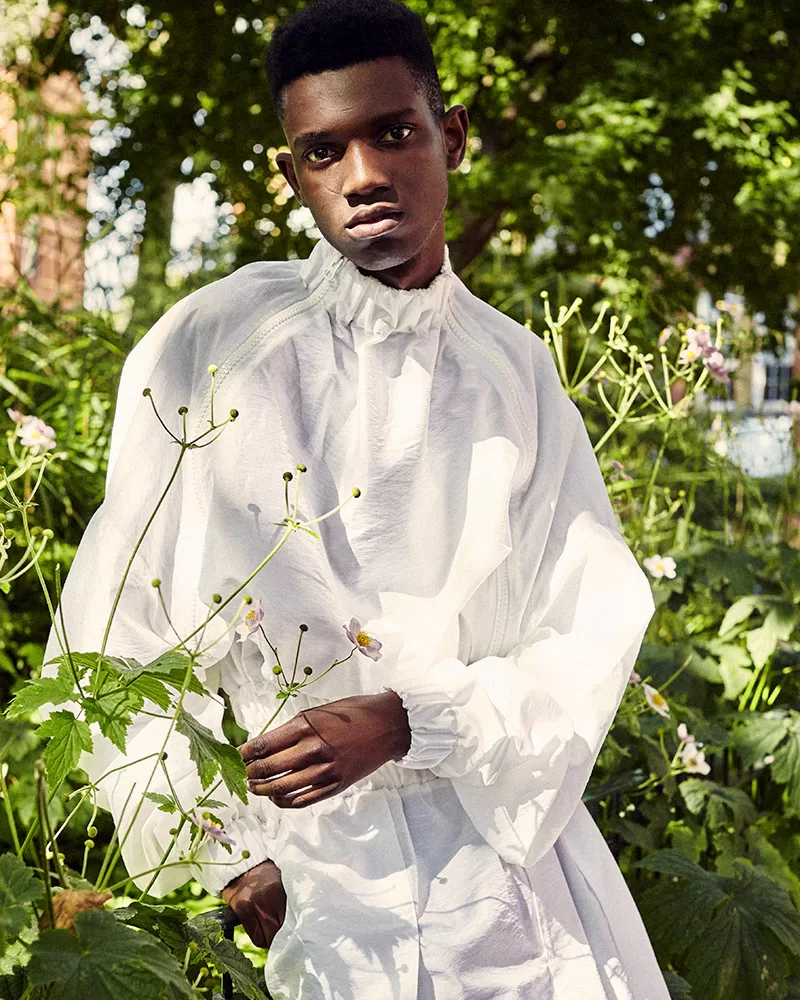
Robyn Priestley
Having recently graduated from the University of Westminster, Robyn has become recognised for her uncompromising approach to sportswear. Manipulating contrasting elements and consistently challenging contemporary norms, the tentative designer seeks to push the limits of traditional design. To find out more, we spoke to Robyn about controversy, living with Dyspraxia and showing the world just what she’s made of.
Your collection is inspired by boxing and 19th century underwear; why did you decide to fuse these particular contrasting elements together?
I never wanted to create the obvious sports inspired graduate collection, “simple, consisting of clean lines created out of bright neoprene, covered in ghastly useless reflectives” – something we’ve all seen a million times before at GFW. Instead I wanted my graduate collection to be memorable, pushing the expectations of sports inspired fashion to its limits and create something never seen before. Having a design background in performance wear, I always knew that one of the core themes of my graduate collection was going to be sports based, and boxing is a sport I have always been fascinated with. I wanted the second element of the collection to be an extreme contrast of the first, busy, classical and complicated. After spending hours scouring through books, wondering around museums and visiting many bric-a-brac stalls, I stumbled across the most incredible 19th century nightdress in Portobello market and was instantly inspired and excited about the challenge of combining elements of such delicate undergarments with such strong boxing silhouettes.
How did this decision influence your choice of fabrics?
The two contrasting themes made designing and choosing fabrics incredibly exciting, and at times very difficult. I still wanted each look to be recognized as sportswear so the inspiration for the core silhouettes was taken directly from boxing training clothes (oversized jackets, boxing shorts, sweat suits, loose vests.) These were created in fine silks, hundreds of meters of light gathered satin and trimmed with layers of lace (inspired by 19th century underwear.) I also included key sportswear fabrics such as wind resistant sports polys, ribbing, and heavy satins (that “real” boxing shorts are made out of) to make the collection more convincing.
Is the juxtaposition of loose fitting sportswear with fine silks and lace in your collection a nod to gender fluidity?
It was never intentional, it just happened, I’m not a designer that intends to be controversial, in fact even saying that makes me cringe. I just love the idea of putting a “bloke” (as we would say in Yorkshire) in something completely unexpected. I remember back to the second year of my degree when I used 6ft4 athletic models and dressed them in oversized, multi-layered, floral, work wear inspired boiler-suits. Everybody thought I was mad but I thought it looked interesting.
With this in mind do you think fashion can and/or should be used as a device to break though gender boundaries?
I 100% think fashion can break gender boundaries. Soo many of todays most talked about young designers are already challenging what “menswear” and “womenswear” is. I was recently lucky enough to be chosen to take part in the Modebelofte exhibition in Eindhoven for Dutch Design Week and was surprised by how many gender neutral collections there were from some of the best fashion schools all over the world. It was such a mad, inspiring environment to be in.
You have previously designed performance wear for Adidas; how has this experience impacted your approach to design?
Designing performance wear at Adidas introduced me to the “importance” of different fabrics. Initially I was astounded by how thoroughly each cloth for each panel of each garment is considered, everything from the positioning of the seams, to the weight of the fabric to how noisy it is when worn is purposefully chosen. In the Adidas studios you are not expected to design something that looks “nice” out of a fabric you “like,” you are expected to create garments out of fabrics which will enhance the athletes’ performance, with trims and colours that are not only attractive but also practical. Even though my graduate collection was not in anyway commercial, Adidas also opened my mind to the world of commercial design; using my graduate collection as a base I have now been able to develop commercial diffusion pieces that can be worn “everyday.”
Can you tell us a little about which techniques and methodologies you prefer to work with?
I love sketching, and normally make lists or notes as I sketch. Like a lot of designers, I’m Dyspraxic and so alongside being incredibly clumsy I sometimes I feel that my mind moves a 100 times quicker than I can act. So I find it incredibly important to always keep a notebook and pen at hand, so if a good idea comes to me I can write it down straight away. Then each morning I try and conjure up some sort of to-do list for that day from the notes that I have previously made. I also always work with a calendar close-by, setting myself design deadlines for each week, otherwise I would never finish anything.
How do you feel you have evolved as a designer?
With each project I develop as a designer. I take every project as a challenge, asking myself, how can I make these designs different from the last ones? What fabrics can I use now? How will these designs / the fabrics I choose respond to the body. Every trial and error is an important learning curve.
Can you describe the archetypal consumer of your work?
I always imagine my muse to be somebody tall, athletic, and unafraid of what others would think.
Do you have any other creative interests outside of design?
Traveling; having designed for multiple companies across Europe I have been lucky enough to be able to visit and live in some of the most incredible cities. Making friends from all different walks of life.
What can we expect to see from you now that you have graduated?
I’m currently working with a company designing football merchandise for some of the UKs biggest teams, developing my own diffusion range alongside this. I plan on going back to designing performance wear, gaining further sponsorship and releasing my second collection next summer.
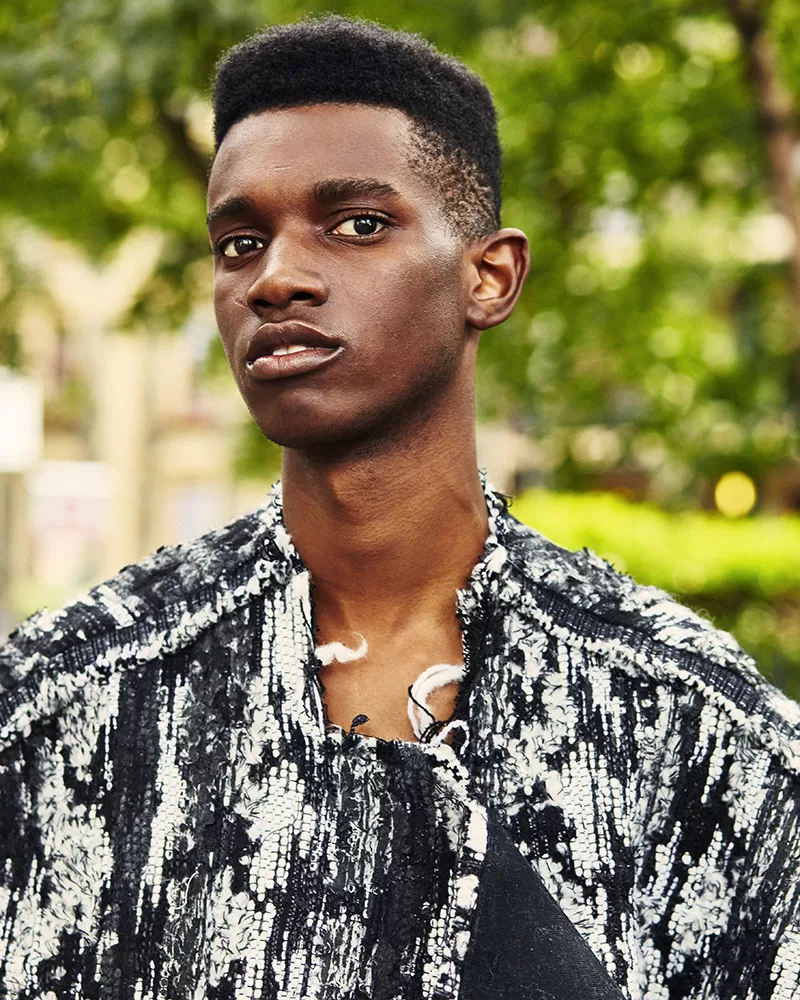
Lucy James
University of Westminster graduate, Lucy James has become recognised for her ability to integrate the traditional customs of indigenous tribes with contemporary menswear staples. Following a series of internships with brands such as Siki Im and Joshua Kane, the designer has forged an unexpected union between structured tailoring and organic sensibilities. Here, we speak to Lucy about her topical approach to design and life after graduation.
Can you tell us the title of your collection and what significance this has?
The collection is called ‘The Tribe’ and is an amalgamation of different elements from a variety of indigenous tribes worldwide. It has influences from eclectic religious groups such a pagans, looking specifically at their traditional forms of dress.
Photographers Jimmy Nelson and Charles Freger formed as the main inspiration for this collection. What is it about their work that you found so enthusing?
I began my research by exploring the traditional dress of Shinto priests as I was drawn to the scale and silhouette of their garments. However, Jimmy Nelsons ‘Before they pass away’ gave me a much broader base to analyse not just one specific culture, but a variety that have influenced much of my work. The natural authenticity of their dress and the vast assortment of materials is what fascinated me most.
What techniques and methodologies did you adopt during the design process?
Screen-printing was a prominent technique within this collection. I began by looking at the body art of the Omo Valley tribes of Ethiopia and their traditional decorative fashions, which then led me to designing prints of a similar nature. The fraying/shredding technique I used on many of the fabrics was used to encourage a natural and organic impression.
The collection presented a series of black card masks with linear features sketched over the top, obscuring the faces of the models. Does this communicate your perspective on identity within the industry somehow?
Just as a tribesman would wear masks and body paint, it is worn to unify the group and conceal one’s true identity. Using an ambiguous face not only focuses the attention away from identifying the individual but also balances out the oversized scale of the designs.
What can we expect to see from you now that you have graduated?
I am currently homeless and looking for employment! In the meantime, I’m aiming to expand on this collection and continue collaborating with other designers.
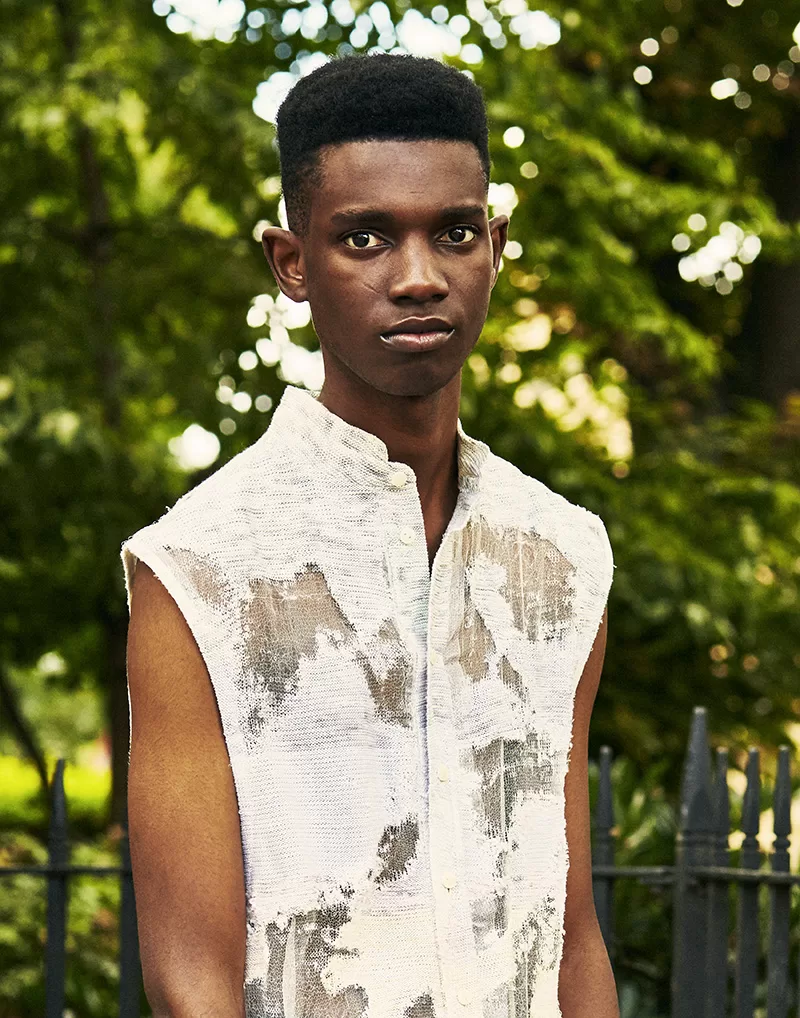
Key Chow
Recognised for his sensual approach to design, Key’s committal to producing garments founded in romance and hedonism has paved the way for a burgeoning career in menswear fashion. Since receiving the Hong Kong Young Design Talent Award (YDTA) in 2012, Key has continued to burst onto the scene having his work featured in a number of international fashion publications. After recently graduating from the Royal College of Art, we talk to Key about his latest collection “NO ASIANS PLZ?” and his quest to turn everyone into a ‘Rice Queen’.
The collection is inspired by the gay dating app Grindr’s profile description “No Asians Please”, can you tell us a little more about this?
This actually came from discussions I have had with my homosexual Asian friends who use the gay dating app Grindr to meet friends. They kept saying that if they were white then more guys would approach them in London and at the same time they said they would never go for Asian guys. I was very interested in this identity issue that people seemed to have about their own race and heritage. I think this is happening not only within the gay group; I also think that Asians tend to underplay the problem of being over-obsessed with Western cultures, aesthetics and lifestyle that may not necessarily suit them.
There also seems to be a fusion of Eastern and Western design elements, why did you decide to do this?
I wanted the collection to show the possibility of Asian aesthetics, cultures, romance, sensuality with the modern perspective of fashion in the Western world, and then turn everyone into a “rice queen”. (Rice queen means a white homosexual guy who is mainly into Asian guys in the gay world)
As a designer do you feel it is important to explore the essence of identity?
Definitely. Identity is something that makes you a unique individual in the world and thus your design aesthetics.
With this in mind, what are your thoughts on the recent progression in gender fluidity within the fashion industry?
I think gender is what it is; it doesn’t mean anything to me but biology. Identity is something which is much more interesting to explore and express. If a man feels the same aesthetics, taste and attitude of a womenswear brand, he will buy clothes from there to express his identity, just as the women do.
In that case, do you think gendered fashion could be considered an out-dated concept?
Yes and no. As I said, I think fashion now is based on identity rather than gender. At the same time, due to the different biological appearance e.g. breasts, hips etc between men and women, it can sometimes make garments less accessible for both genders.
Your work centers on the exploration of dreamy textural surfaces and sequences of colour, what is it you enjoy about working with these processes?
They are all the outcome of textile experiments inspired by what I saw from the working class in the old Hong Kong photos (100s years ago). This is then combined with my own aesthetic and that of the photographer Ryan Mcginley; he is always my muse. I really enjoyed working with textiles and colours to express something personal and intimate. The touch, the colour-ways, the pattern, the smell, the sound and the movement of a textile can definitely tell its own unique romantic story.
Can you talk us through your plans now that you have graduated?
I am currently working for J.W. Anderson and I am also planning to set up on my own and launch the AW16 collection next year. Exciting and worrying as well!
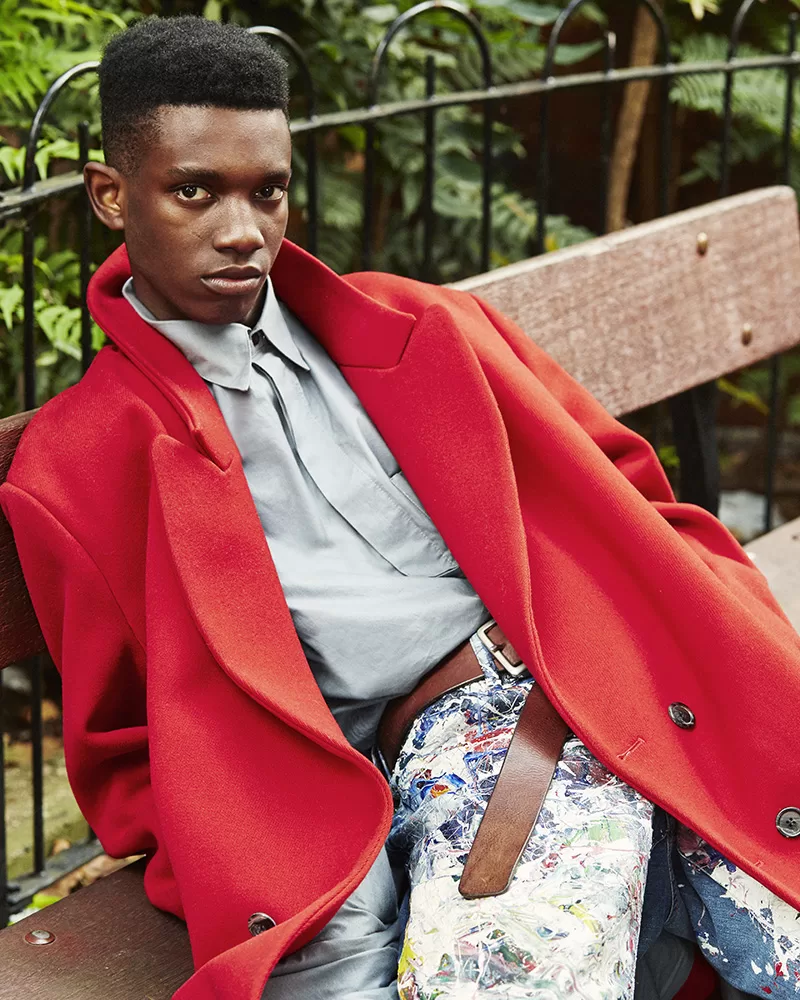
Charles Jeffrey
Since graduating from Central Saint Martins, young designer Charles Jeffrey has received a wealth of admiration from some of the industry’s most acclaimed figures. With an emphasis on destruction and a constant reflection on personal style, Charles’ intrinsic and resourceful expression through design has thrust his divergent craft into the limelight as he recently joined the line up of London design scheme Fashion East. Following his success, we caught up with Charles to discuss setting up his own club night and pushing the limits of fashion design.
The collection is founded with the idea of re-appropriation and looking at your own personal wardrobe; can you talk us through this decision?
I found it rather hard working in the way most of my peers were working, initial research from old magazines or art books then making patterns and experimenting with shape and cut. I can’t cut or sew well for that matter, and I found myself extremely frustrated at the over stimulation that research gave me. What I got good responses from was how I wore my clothes myself, and then my illustrations, so I basically decided to treat garments like illustrations, up scaling things as canvases and going from there and copying the clothes I wore to put forward my vision of what a man should look like.
As well as design you also work with illustration; how does this translate into your take on menswear?
I find illustration doesn’t just have to be with paint pens and pencils, I enjoy making marks with many different materials so extending that into materials that lend themselves to fashion is a great way to bring the two worlds together.
The collection centres on the use of bold, blocked, primary colours; why did you decide on this colour arrangement?
I find myself always attracted to those colours as they are unapologetic and loud; a bit like myself.
You have pursued numeral placements most namely that at Dior; what did you learn from your time there?
That speaking French really makes a difference, being polite and working hard can get you a long way.
During your final year you set up club night LOVERBOY; can you tell us a little more about this?
LOVERBOY is a monthly club night that I held at a club called Vogue Fabrics in East London. It started as my own birthday party and is now a place where I can showcase work I do with photographers and now my own designs as well. Most recently it has been part of the Victoria and Albert Museum’s Friday late, seeing the club and its infamous crowd become part of the museum. It has helped fund my master’s degree and also the images have informed my work visually as well as conceptually. It was a tool for me to be able to start building a universe for my clothes to exist in and hopefully for the future.
Do you think it is important to push the limits of fashion design, if so how do convey this into your work?
If you don’t then what’s the point,! I feel I do this through the use of colour and proportion.
Your work commits to earnestly addressing the notion of gender fluidity without prevarication; what are you thoughts on the rising recognition of gender narratives within the industry?
I feel it is important, and hopefully gender fluidity shall be not just a trend but also something that is ingrained in all aspects of fashion.
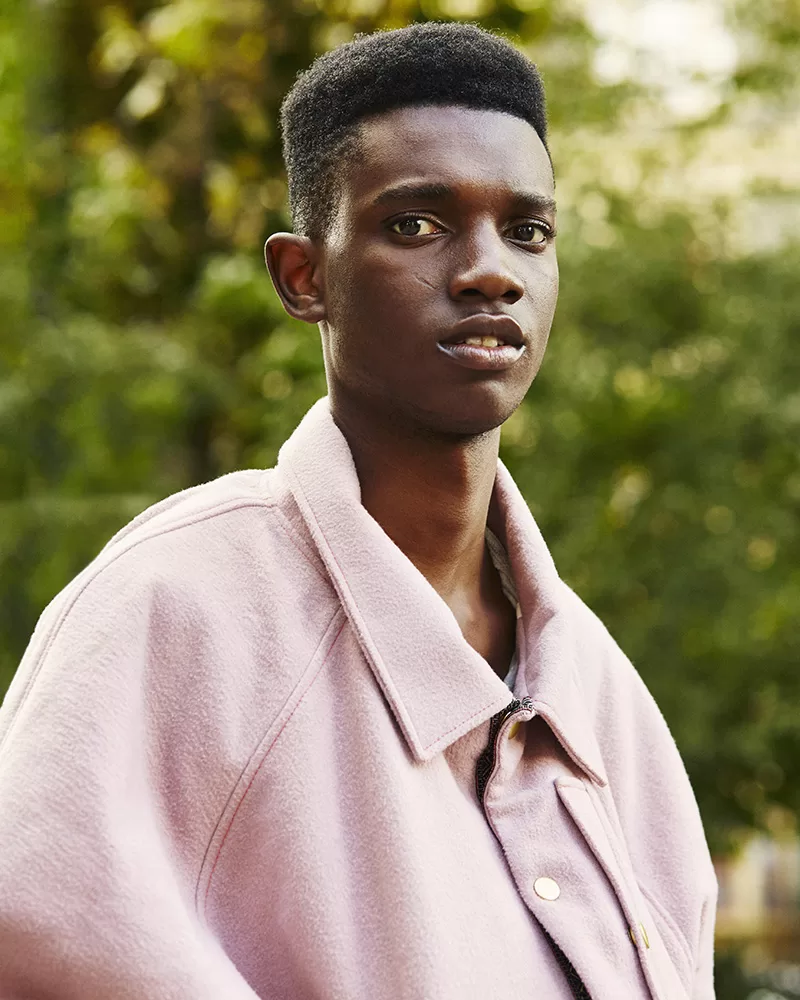
Robert Newman
Robert Newman’s collection “Kicking A Dead Pig” has manifested a wealth of attention and thrust the young designer into a storm of acclamation. The designer’s prolific approach to design has lead to a series of internships at leading fashion brands including North Sea Clothing and Christopher Raeburn as well as a deviceful collaboration with Clarks Originals. After graduating from the University of Westminster, we speak to Robert about growing up in the West Country and the future of fashion.
The collection is a voyage into your own West Country background, what makes it such a unique place to concentrate on?
Using my first collection as an opportunity to delve deeper into where I’m from seemed the obvious thing. A lot of my time growing up in Bristol was spent cycling out of the city at weekends to places like Silbury hill, Avebury and Glastonbury. Meeting this unbroken line of oddness that the Westcountry still seems to have; these weird characters that swill cider, stare at ancient monuments and live in knackered army surplus, outdoor gear and woollen blankets. I like the (possibly fictional) idea that this sort of wandering character has been around since pagan times, not doing anything in particular, just trudging through the murk and gloom and rain between places.
Did any other places, movements or aesthetics factor into process?
The late conservationist writer Roger Deakin ended up as a sort of muse to the whole thing. His two books Waterlog and Wildwood are both pretty much just sets of anecdotes, often concerning the British countryside and its stranger corners. I was lucky enough be able to go and visit his archive at the UEA in Norwich and was given access to all the unpublished photos of his wanderings around England. The inspiration for the screen printed ‘bundle of sticks’ graphic that features throughout my collection came from a few of these images, showing Deakin and his friends (an equally as motley set of characters that I’d expect to meet in rural Somerset) constructing shelters out of bunches of willow on his farm in Suffolk. There’s quite a disparate set of influences on top of that but I’d end up going on for hours, perhaps that’s part of the point.
You incorporated screen-printing and hand dyed textiles, which are very manual processes; is it important for you to maintain this hands-on approach to design?
Absolutely, I think there’s a sort of routine in both those processes that imbues in the garments an extra dimension, to know that that much extra time during their manufacture has been spent methodically printing, dip dyeing etc. Again it’s about making the individual piece matter on its own as a working garment on top of being part of that fashion image that gets peoples attention.
“Kicking A Dead Pig” is primarily concerned with raw, traditional perceptions of masculinity, what is it about this gendered approach to design that appeals to you?
That’s an interesting interpretation of my collection, and there are some elements there I agree with however I had never considered my approach to be gendered beyond the fact that it is a menswear collection. I’ve always positioned my work in the bracket of menswear because this is wear it works bestbut ultimately it is product, whoever wears it, men or women. I think the primary concern of it is clothes really. It is the characters, backdrop, narrative, and ultimately product that appeal to me.
The boundary between menswear and womenswear continues to blur as the industry champions gender fluidity, what are your thoughts on this and do you think this could have an effect on your approach to design in the future?
I really enjoy a lot of what other designers are doing in this area, particularly people like Martine Rose, Vetements and Charles Jeffery. As I said before, it’s the characters and atmosphere that interest me so depending on who my characters are each time it may have an affect. Let’s wait and see.
Now that you have graduated, what can we expect to see from you?
I intend to start a brand producing beautifully made and well designed collections; this will take time. Whilst I make and sell products I am proud of now, on a very small scale, I don’t want to rush headlong into something bigger without a wealth of the experience that’s only just opening up to me having just graduated, only to lose my business early on. I want to take my time over this, developing products, materials, production and an overall brand aesthetic at my own pace, whilst undertaking as much other work in menswear as possible, continuing to build relationships within the industry.
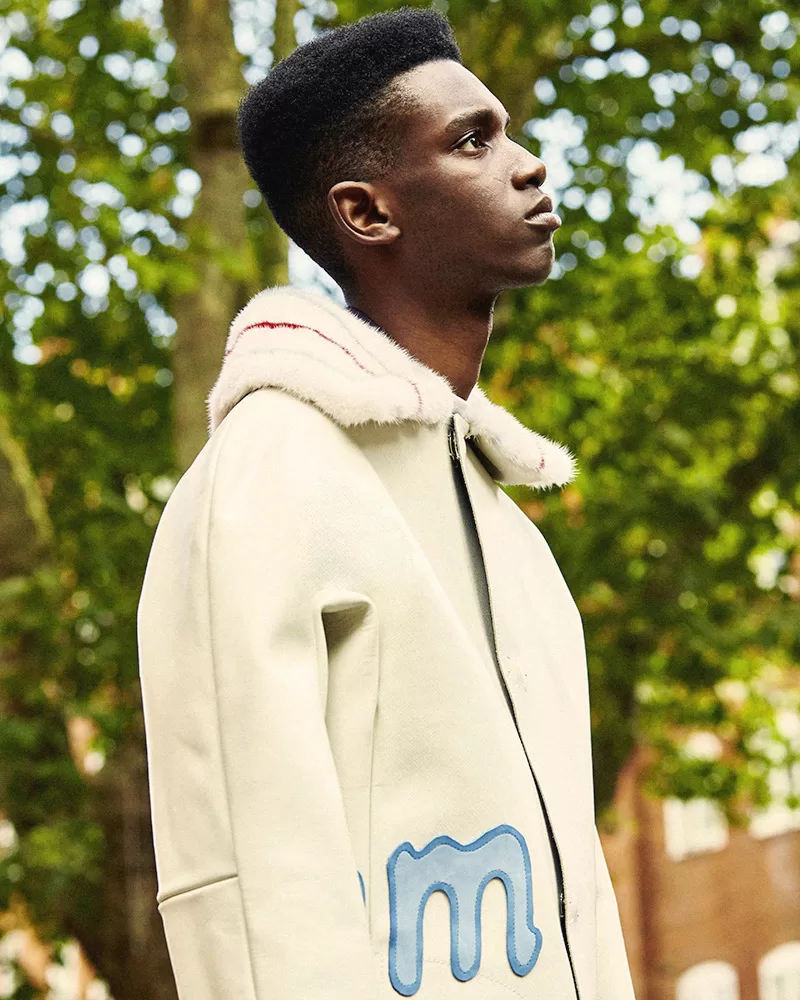
Daniel Fletcher
With a collection that addresses the gentrification and re-development of urban areas in London, Daniel Fletcher has re-established the rules of traditional menswear. During his time at Central Saint Martins, the burgeoning designer interned at fashion powerhouses Lanvin and Louis Vuitton where he cultivated an innate attention to detail and ardour for creative freedom. Here, we talk to Daniel about his critique of socio-economic change and find out just what it means to be part of the Peckham Pony Club.
The collection is formed as a reaction to the gentrification of urban spaces in London, why is this such an important topic to you?
The inspiration behind this collection came completely naturally, it was something that I could see happening all around me and I felt concerned about the negative impacts gentrification was having; this was my way to voice these concerns.
You selected Peckham as the backdrop for the collection, what makes it such a distinctive area to focus on?
I lived in Peckham whilst I was studying and witnessed the huge shift in the attitudes towards it as it became a trendy place to live but with this came developers whose plans threatened the creativity and unique charms of the area. It is a bit rough around the edges but this is part of what makes it such an interesting and vibrant part of London so I tried to reflect this in my designs by not making anything too perfect. For example the striped prints I designed are hand drawn so are all a bit wobbly and the leather jackets are unlined and have raw edges.
The boys captured in Alastair McLellans’s ‘Ultimate Clothing Company’ also heavily influenced this collection, what is it about this aesthetic that influenced your design process?
I’ve always been a fan of Alastair McLellans’ work but what I liked about this book in particular was the naivety of the images; there’s no pretence or glamour which is usually present in fashion photography so it worked as a visual stimulus with my more conceptual inspiration. There are also some great examples of sportswear garments in there.
As a male designer producing characteristically masculine garments, what are your views on the blurring of gender constraints within the industry?
Although my work was designed as a menswear collection, I love the idea of women wearing it. I styled a womenswear shoot for the South East London Journal recently and used a few of my pieces and it worked really well; I’ve seen this collection so much now it was refreshing to see it worn in a different way. Fashion has moved forward so much in the past few years and the blurring of gender constraints seems like a natural and positive progression, if something looks or feels good then why should it matter which sex it was designed for?
Do you think this could have an effect on your approach to design in the future?
Absolutely, this was my first collection and although I have a clear idea of my aesthetic, I feel like I’ve still got a lot more to explore in terms of product categories and markets. With the idea of gender boundaries and even seasons going out of the window, I’d like to take advantage of this and produce clothes which appeal to people across the board.
What can we expect to see now that you have graduated?
I’m really pleased with the response my collection has received so I’m currently working on setting up my business and plan to develop my own label. I’ve been in talks with some stockists for my graduate collection so hopefully there will be some pieces in stores in January if I manage to get my head around production. Right now I’m back at Saint Martins for a couple of weeks working on a course for Antonio Banderas, it may sound a bit unusual but I’m having great fun!
